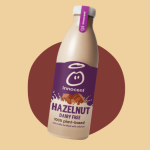
However, Jacob Shapiro, a partner and director of geopolitical analysis for Cognitive Investments (CI) shared at the PDPW Business Conference in the Wisconsin Dells that down the road, there won’t be one global market for producers to sell into. Instead, numerous potential trade markets will be the way of the future.
“We’re going to see different spheres of political influence around different powers,” he says.
Dan Basse, president of AgResources Company, told the PDPW audience last week that a great reset is underway for the dairy economy, which will spell a more competitive world market.
“The U.S. is no longer the center of the world in terms of the availability and increasing supply,” Basse said, noting that over the past three years, China and the U.S. have been walking in lockstep.
“We all need to be doing our share in bringing food to the table because America is going to be needing this long term,” he says. “63% of net farm revenue is money that you keep which is determined by the decisions you make in the markets.”
2023, A Less Profitable Year
As most producers have already felt the tides changing, 2023 will likely be a challenging year. And economists like Basse say it will be a less profitable year, too.
“USDA projected that producers will be making less money this year. A 16% decline because of the rising costs and falling prices,” Basse stated. “The only one that is bucking that trend is going to be the beef side of the plate where the cattle market is going to see the higher price with record highs and a better opportunity for those farmers going forward.”
Noting that prices won’t be as bad as in 2021, but unfortunately not as good as last year. Basse underscores that this will be the biggest net deficit we’ve seen to date.
Change in China
With China continuing to be dairy’s biggest agricultural customer, Basse shared that the U.S. is still averaging $35 billion annually with agricultural trade in China.
“As we look at dairy exports to China, we of course finished the year strongly. But we’re now down into the early part of 2023,” he says.
What’s Unfolding in the U.S.
Texas led the way in cow numbers this past year, with a growth of 25,000 cattle. South Dakota and Iowa showed an increase year-over-year as well. However, Basse shared that Wisconsin lost 5,000 cows, mostly due to environmental pressures.
The rising grocery bill is felt in every household and Basse notes that Americans are trading down their away-from-home purchases.
“All of a sudden, a quarter pounder, french fries and a Coke at $8.50 is a bargain,” he says. “The fast-food lines are relevant as Americans are consuming more fast food than they ever have done before.”
For a long time, Baby Boomers and Millennials especially helped prove a strong workforce in the U.S., but that has started to slow down in the last few years. In fact, Basse says that as far as we can see going forward, the U.S. will be losing 500,000 to 3 million people per year from the workforce.
“This happens when Boomers and Millennials and others retire and we don’t see Gen X’s or Gen Z stepping up,” he says. “This is a big deal. This is going to keep wage pressures on many items.”
This also impacts labor, as fewer people in the workplace have more job options than ever before. Basse noted that robotic milking or any labor-saving technology is a good investment for a dairy farm, especially as we think about labor challenges presented today and those to come down the road.
Rising Interest Rates
Turning towards their lender for a conversation on interest rates has some producers pausing to make the leap of faith by tackling big investments. Basse, however, reminded the PDPW audience that 7% interest rates are here to stay, but this rate is relatively low compared to history. This is felt beyond U.S. soil, as high-interest rates have followed suit all around the world.
However, both Basse and Shapiro said they were optimistic about the U.S. economy. Shapiro notes that exports are a critical part of the equation for the economic viability of U.S. dairy farmers.
“Remember, something like 1/6 of all U.S. milk is sold commercially around the world,” Sharpio says. “If we look at where the per capita consumption of dairy products is going up, though, it’s kind of a mixed bag.”























